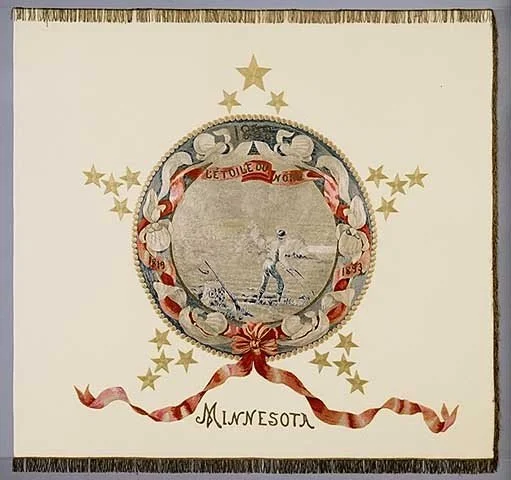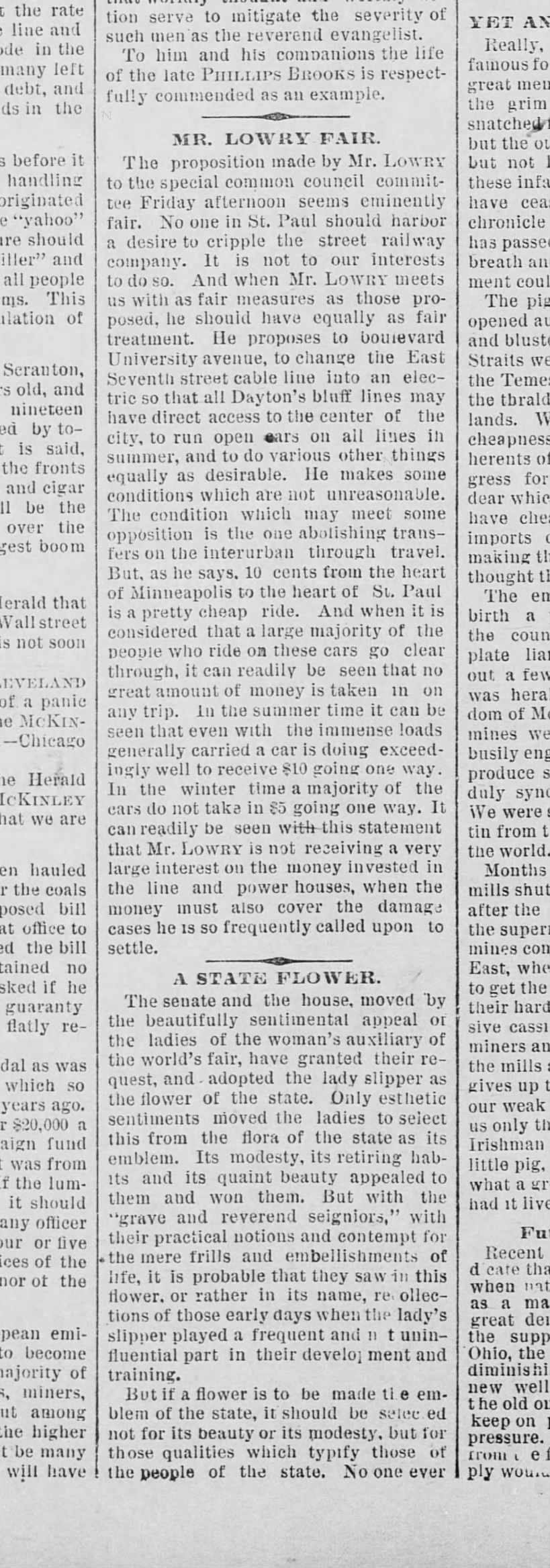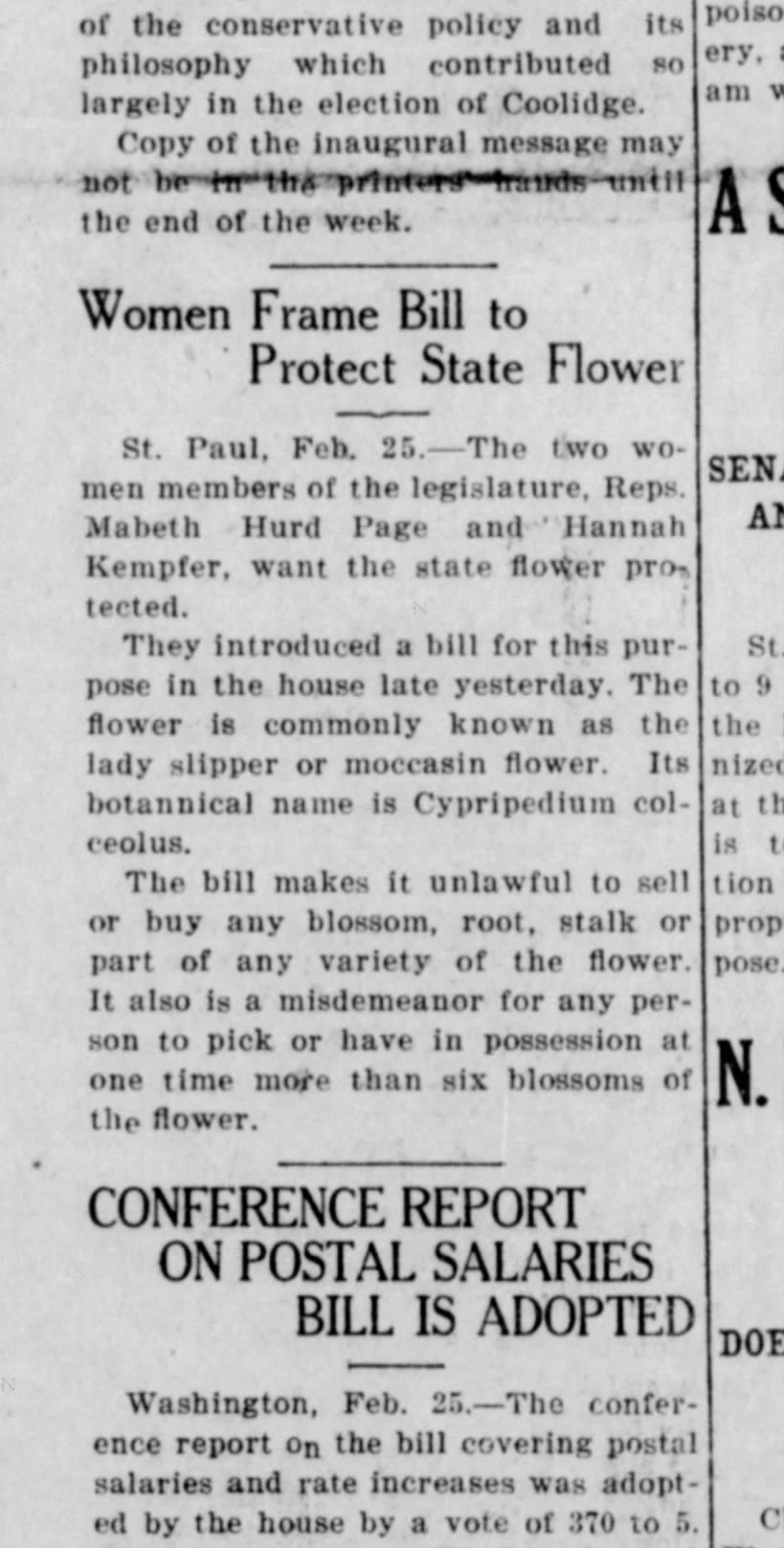The Minnesota State Flower
When the group of female artists and embroiderers set about creating the first Minnesota state flag in 1893, they made the decision to add the pink and white Showy Ladyslipper as a border around the state seal. This addition, by default, created a state flower. The Women’s Auxiliary Board had chosen the ‘mocassin’ or ‘ladies’ slipper’ orchid - because of its aesthetic qualities - “its modesty, its retiring habits and its quaint beauty”. You would think that the selection of a state flower would be a simple and sedate affair, but alas, nothing involving gathering a group consensus is ever easy.
A male writer responded to their efforts with his lengthy opinion about the choice because he believed it did not reflect the character of actual Minnesotans. His choice of state flower would be better because, “It is not modest; nor are they. Like them, it came with the pioneers…It is pugnacious, persistent, flourishing under adversity…it is an indefatigable explorer…it has spread over the state and occupied it.”
Have you guessed what variety of bloom he believed best represented Minnesotans?
The Dandelion. A weed. An invasive species. Well, he’s not wrong. Nevertheless, his satirical attempt at self-awareness was unmoving and the ladies were not swayed. The legislature quickly followed and bill designating a state flower was passed.
A minor scandal then erupted in 1902 when the officially legislated state flower was called out as a FAKE! The St. Anthony Womens’ Study Group pointed out that the particular variety of lady slipper (cypripedium calceolus that had been incorrectly specified in the legislation did not in fact grow wild in Minnesota and therefore was an improper choice. They also pointed out that this was an oversight by the legislators who had written the bill, not the ladies, because it was obvious that the Women’s Auxiliary Committee had intended to select a pink and white variety of lady slipper (as demonstrated by those embroidered on the flag) versus the maroon and gold variety enshrined in law. They proposed the legislature rectify the situation by designating the state flower the correct pink and white variety (cypripedium reginae), which did actually grow within the boundaries of the state. The legislature ratified this decision.
But again, another male writer reported false facts about the exalted flower. He claimed it grew in the prairies - it did not. He waxed poetic about its “golden effulgence of beauty”, but pink and white isn’t very golden, is it? And, not paying attention to detail, he misspelled the latin name for the flower (colcecaius instead of calceolus).
The ladies were not swayed and weren’t backing down. In a polite letter (only barely hiding their thinly veiled rage) they wrote in part, “It were wise for our brilliant editor to familiarize himself with the text of a legislative enactment before criticizing it or making a desperate attempt to be humorous”.
The newspaper did publish their rebuke, but fell far short of actually apologizing. In fact, the writer tried to blame his mistakes on the ladies for bringing the subject up in the first place. In the end, properly chastised, he did finish by voicing his support for putting the matter right at the statehouse.
By 1922, the state flower was being over-harvested and was on the brink of extinction. Women had gained the right to vote almost two years earlier. Minnesota was proudly represented by FOUR female state legislators. Two of them, Hannah Kempfer and Mabeth Hurd Paige, were at the forefront of the conservation movement. They proposed a bill to outlaw the sale of the dwindling emblem. It would be illegal to uproot the Lady Slipper. Even if the orchid grew on your own property, it would be illegal to sell it without getting prior written permission from the Secretary of State.
Why such a strict law about a flower? The trouble is that Lady Slippers grow very, very slowly. Some varieties can take up to 16 years to blossom. If allowed to thrive in their natural habitat they can live up to 50, even 100, years. Unfortunately, their natural habitat (bogs, ferny marshes, and shady forest) are decreasing rapidly because of road construction and development. Thankfully, our state flower was granted the protection it needed to survive and we are still able to enjoy it today.
Today, we are lucky to have lots of places to see our stunning state flower. In the Twin Cities, the Eloise Butler Wildflower Garden is a spectacular stop and the blooms can be spotted along Lady Slipper Lane.
If you are looking for a day trip, take a drive along the Lady Slipper Scenic Byway. The byway itself is a 28-mile drive that follows County Road 39 between the small, north woods town of Blackduck and Highway 2 east of the town of Cass Lake. The blooms start unfurling in late June to early July.
















